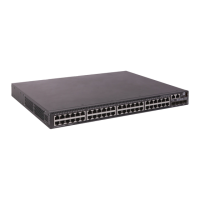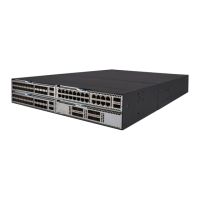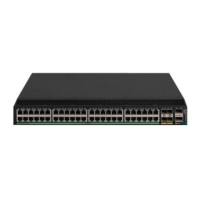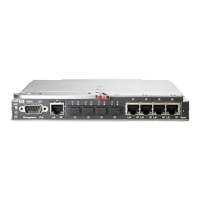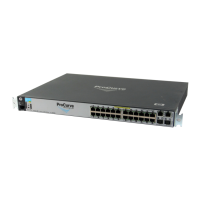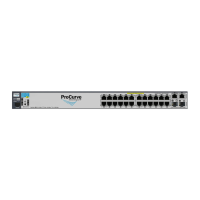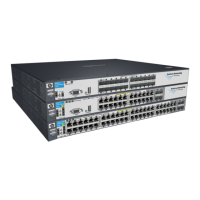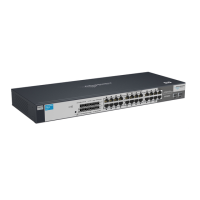33
Assign the master switch higher member priority than any other switch.
Bind physical ports to IRF port 1 on one switch and to IRF port 2 on the other switch. You
perform IRF port binding before or after connecting IRF physical ports depending on the
software release.
Execute the display irf configuration command to verify the basic IRF settings.
For more information about configuring basic IRF settings, see the IRF configuration guide or virtual
technologies configuration guide for the switch series, depending on the software version.
Connecting the IRF physical ports
Use twisted pair cables, SFP/SFP+ cables, or SFP/SFP+ transceiver modules and fibers to connect
the IRF member switches as planned.
Wear an ESD wrist strap when you connect twisted pair cables, SFP/SFP+ cables, or SFP/SFP+
transceiver modules and fibers. For how to connect them, see HPE Transceiver Modules User
Guide.
Verifying the IRF fabric setup
To verify the basic functionality of the IRF fabric after you finish configuring basic IRF settings and
connecting IRF ports:
1. Log in to the IRF fabric through the console port of any member switch.
2. Create a Layer 3 interface, assign it an IP address, and make sure the IRF fabric and the
remote network management station can reach each other.
3. Use Telnet or SNMP to access the IRF fabric from the network management station. (See the
fundamentals configuration guide for the switch series.)
4. Verify that you can manage all member switches as if they were one node.
5. Display the running status of the IRF fabric by using the commands in Table 10.
Table 10 Displaying and maintaining IRF configuration and running status
Display IRF fabric information.
Display basic IRF settings for each member device.
display irf
configuration
Display IRF fabric topology information.
To avoid IP address collision and
network problems, configure a minimum of one multi-active
detection (MAD) mechanism to detect the presence of multiple identical IRF fabrics and handle
collisions.
For more information about MAD detection, see the IRF configuration guide or virtual
technologies configuration guide for the switch series, depending on the software version.
